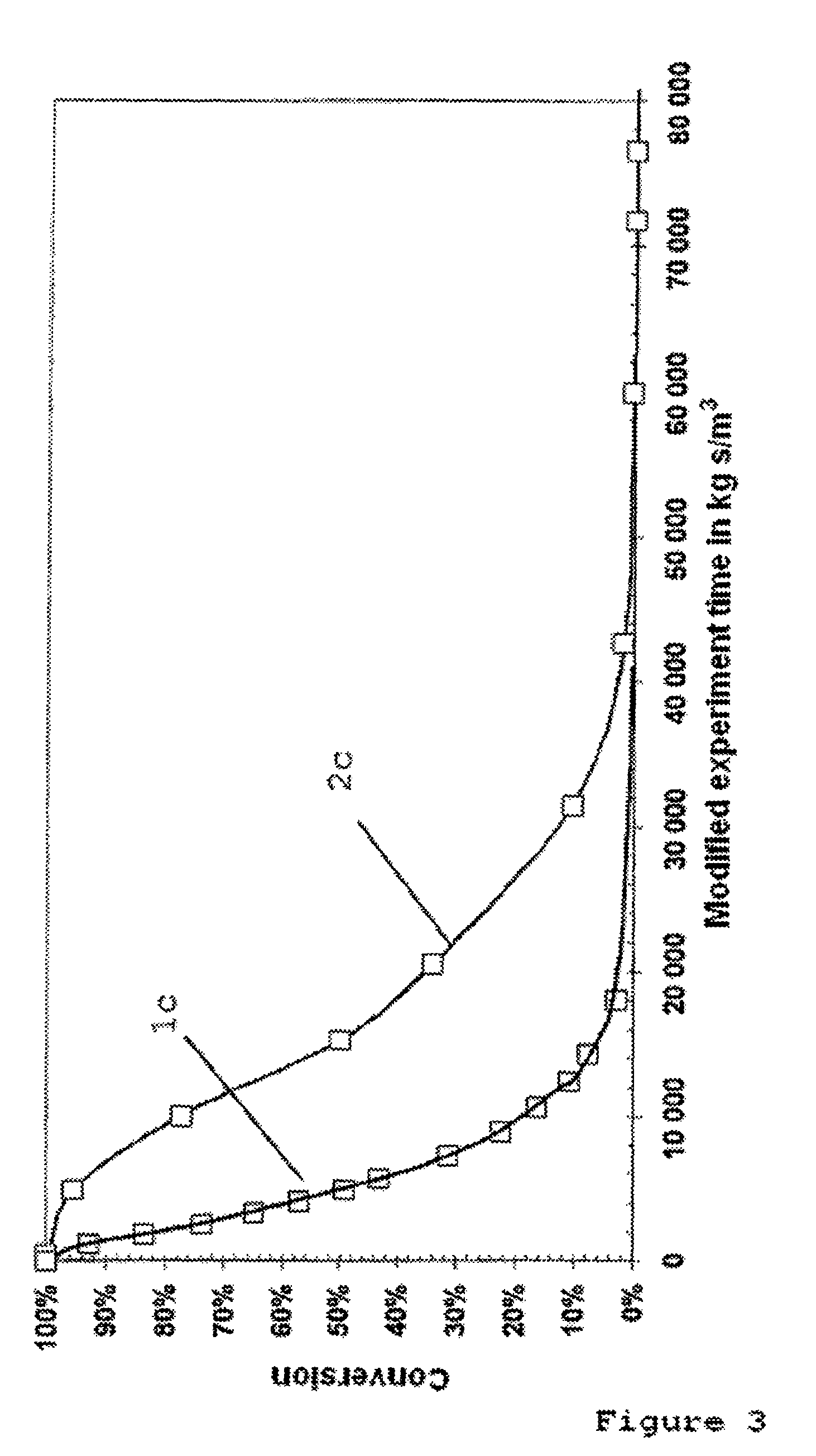Porous heterogeneous catalyst coated with an ionic liquid
a heterogeneous catalyst and ionic liquid technology, applied in the direction of organic compound/hydride/coordination complex catalyst, physical/chemical process catalyst, metal/metal-oxide/metal-hydroxide catalyst, etc., can solve the problems of general non-combustible and no measurable vapour pressure, and achieve the effect of reducing the activity of the catalyst, reducing the thickness and maintaining the same selectivity
- Summary
- Abstract
- Description
- Claims
- Application Information
AI Technical Summary
Benefits of technology
Problems solved by technology
Method used
Image
Examples
example 1
[0123]A Süd-Chemie AG G-33 RS supported nickel catalyst, which is commercially available in the form of tablets measuring 6×6 mm, was ground into a powder by means of a ball mill. The particles with a diameter in the range of 125-250 micrometers were separated from the ground product and were exposed to a reductive hydrogen atmosphere, heated to a temperature of 300° C., in order to activate the nickel metal.
[0124]The thus-activated, uncoated nickel catalyst (catalyst without IL-coating) was used as a comparison example in the subsequent measurements and reactions.
example 2
[0125]To prepare the catalyst according to the invention, 0.8145 g of the uncoated activated nickel catalyst prepared as in Example 1 above was suspended in a solution of 100 ml CH2Cl2 and 0.05 g 1-butyl-3-methyl-imidazolium octyl sulphate as an ionic liquid under a protective nitrogen atmosphere and the solvent CH2Cl2 evaporated off under vacuum on the rotary evaporator.
example 3
[0126]The pore system of the activated nickel catalyst without IL-coating according to Example 1 and of the nickel catalyst provided with an IL-coating according to Example 2 were characterized by means of BET and Hg porosimetry measurements.
[0127]FIG. 1 shows the relationship between the pore volume of the coated and uncoated catalysts and the pore diameter. The curves 1a and 2a of the uncoated and coated catalyst respectively show that the pores of the coated catalyst are coated with the ionic liquid in a substantially uniform thickness, largely regardless of their diameter. The data showed that the IL-coating covers approx. 22 vol.-% of the original volume of the uncoated nickel catalyst.
[0128]FIG. 2 shows the relationship between the inner surface of the uncoated and coated nickel catalyst and the pore diameter. The curves 1b and 2b of the uncoated and coated nickel catalysts respectively show that, due to the IL-coating, the inner surface of the coated catalyst is reduced by ap...
PUM
| Property | Measurement | Unit |
|---|---|---|
| melting point | aaaaa | aaaaa |
| melting point | aaaaa | aaaaa |
| melting point | aaaaa | aaaaa |
Abstract
Description
Claims
Application Information
 Login to View More
Login to View More - R&D
- Intellectual Property
- Life Sciences
- Materials
- Tech Scout
- Unparalleled Data Quality
- Higher Quality Content
- 60% Fewer Hallucinations
Browse by: Latest US Patents, China's latest patents, Technical Efficacy Thesaurus, Application Domain, Technology Topic, Popular Technical Reports.
© 2025 PatSnap. All rights reserved.Legal|Privacy policy|Modern Slavery Act Transparency Statement|Sitemap|About US| Contact US: help@patsnap.com



